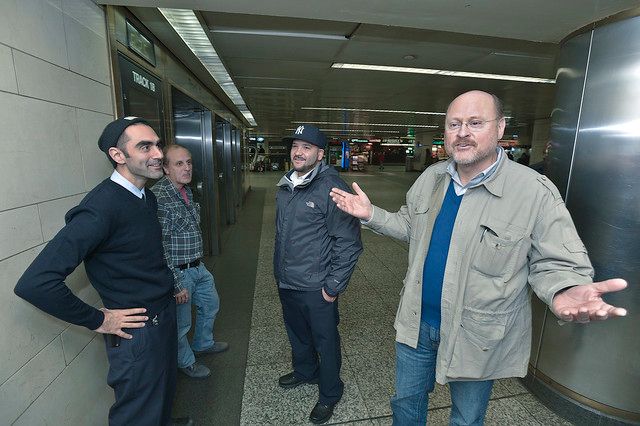How Much Credit Does MTA Chairman Lhota Deserve Regarding Sandy?

THE COMMUTE: MTA Chairman Jeff Lhota is so popular these days for the way he handled Superstorm Sandy that there is talk of him running for mayor. The question is how much credit does he actually deserve?
Not as much as you may think. Bureaucracies move slowly. Changes do not occur overnight. Former MTA Chairman Jay Walder received credit for many innovations (such as the countdown time clocks) which were well underway before he arrived on the scene, yet most thought he conceived all the MTA’s new technology ideas.
The Rudin Center for Transportation recently released a very detailed report documenting transportation during and after Superstorm Sandy, and makes recommendations for improvements.
While I do not agree with all of their recommendations, the report is an invaluable resource documenting events in a timeline format discussing all transportation modes in the region. Moreover, it explains why the MTA took the protective measures it did prior to the storm. It did so due to storms in 2004 and 2007, which the MTA was not prepared for, and which shut down portions of the system due to heavy downfalls. The report stated the following:
In response to the 2007 flood, Governor Eliot Spitzer commissioned a report to examine the storm response, and make recommendations for infrastructure and operational improvements. A task force, in the report “August 8, 2007 Storm Report,” identified three primary problems:
- Poor communications within the MTA resulted in a lack of coordination among employees;
- Infrastructure to prevent water from entering the system and to pump it out was insufficient; and
- Customers could not get reliable information, especially on subway platforms.
The MTA implemented many of the task force’s recommendations, and by 2009, had completed more than $30 million worth of projects to prevent flooding.
The report goes on to enumerate those projects and operational strategies which prevented much damage that would have occurred had these steps not have been taken. Of course, all this happened before Joe Lhota’s watch began.
Perhaps, the most interesting quote in the report is one by Klaus H. Jacob, a research scientist at Columbia University who made the following statement after Hurricane Irene. He estimated that the storm surge from Irene came “just one foot short of paralyzing transportation into and out of Manhattan.” The report continues: “He predicted that a larger storm would render the tunnels under the Harlem and East Rivers ‘unusable for nearly a month or longer, at an economic loss of about $55 billion.’”
One of the report’s recommendations, that Bus Rapid Transit (BRT) should be implemented where subways are non-functioning shows a lack of understanding what BRT (or as it is called here, Select Bus Service) really is. It is more than just exclusive bus lanes and cannot just be implemented overnight. The MTA has thus far taken over three years planning the B44 Select Bus Service and we may still be a year or more away from it becoming reality.
Nevertheless, the report is well worth reading and will serve as a great historical reference. The report’s other recommendations regarding all modes of transit, infrastructure upgrades, funding, and communications should be heeded. Let’s hope that government has learned something from Sandy so that damage and hardship from future storms is minimized. Just as the MTA learned from the 2004 and 2007 storms that prepared them for Sandy, we should also learn from what was not done right before and after the storm.
The MTA and the NYC Department of Sanitation did superb jobs after the storm and Lhota did a good job leading the MTA, but we shouldn’t rush to give any single individual all the credit by elevating him or her to superstar status.
The Commute is a weekly feature highlighting news and information about the city’s mass transit system and transportation infrastructure. It is written by Allan Rosen, a Manhattan Beach resident and former Director of MTA/NYC Transit Bus Planning (1981).
Disclaimer: The above is an opinion column and may not represent the thoughts or position of Sheepshead Bites. Based upon their expertise in their respective fields, our columnists are responsible for fact-checking their own work, and their submissions are edited only for length, grammar and clarity. If you would like to submit an opinion piece or become a regularly featured contributor, please e-mail nberke [at] sheepsheadbites [dot] com.



